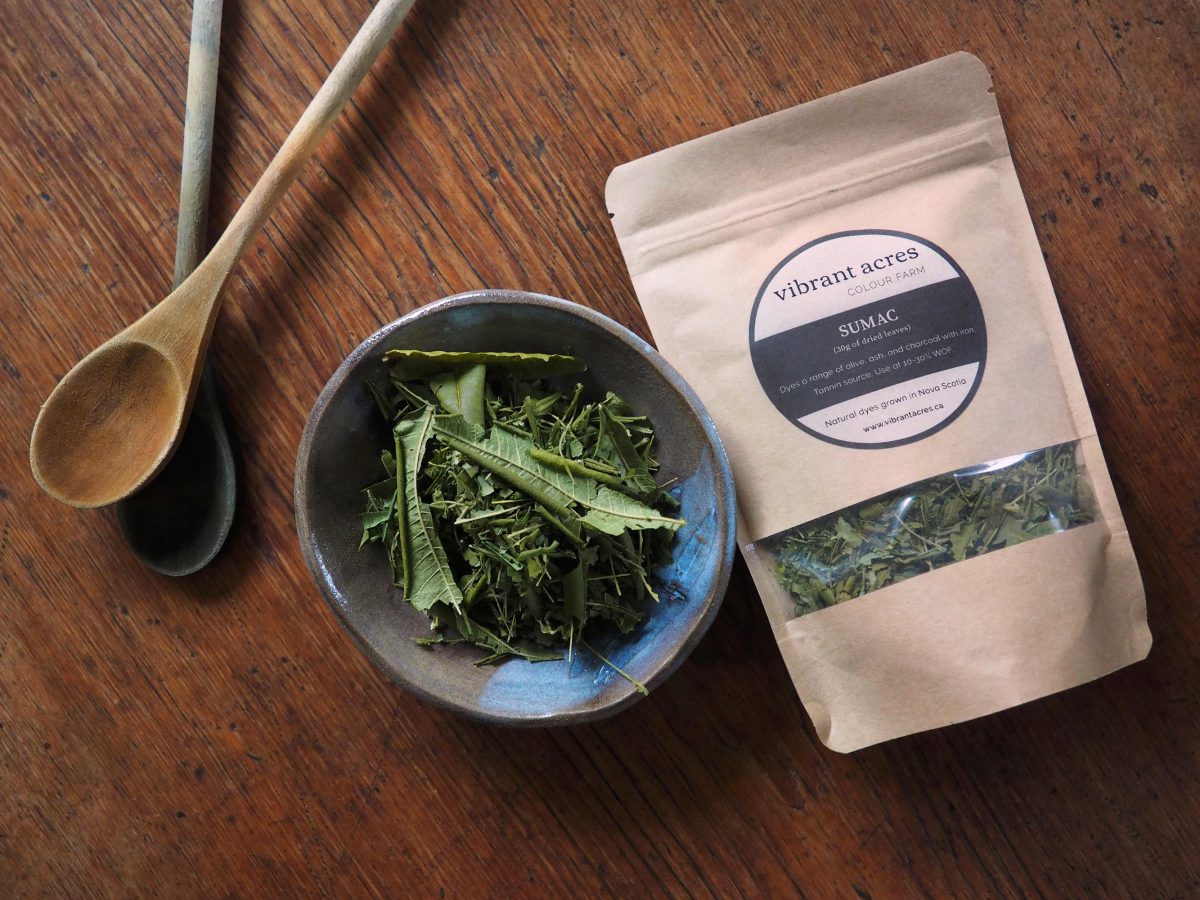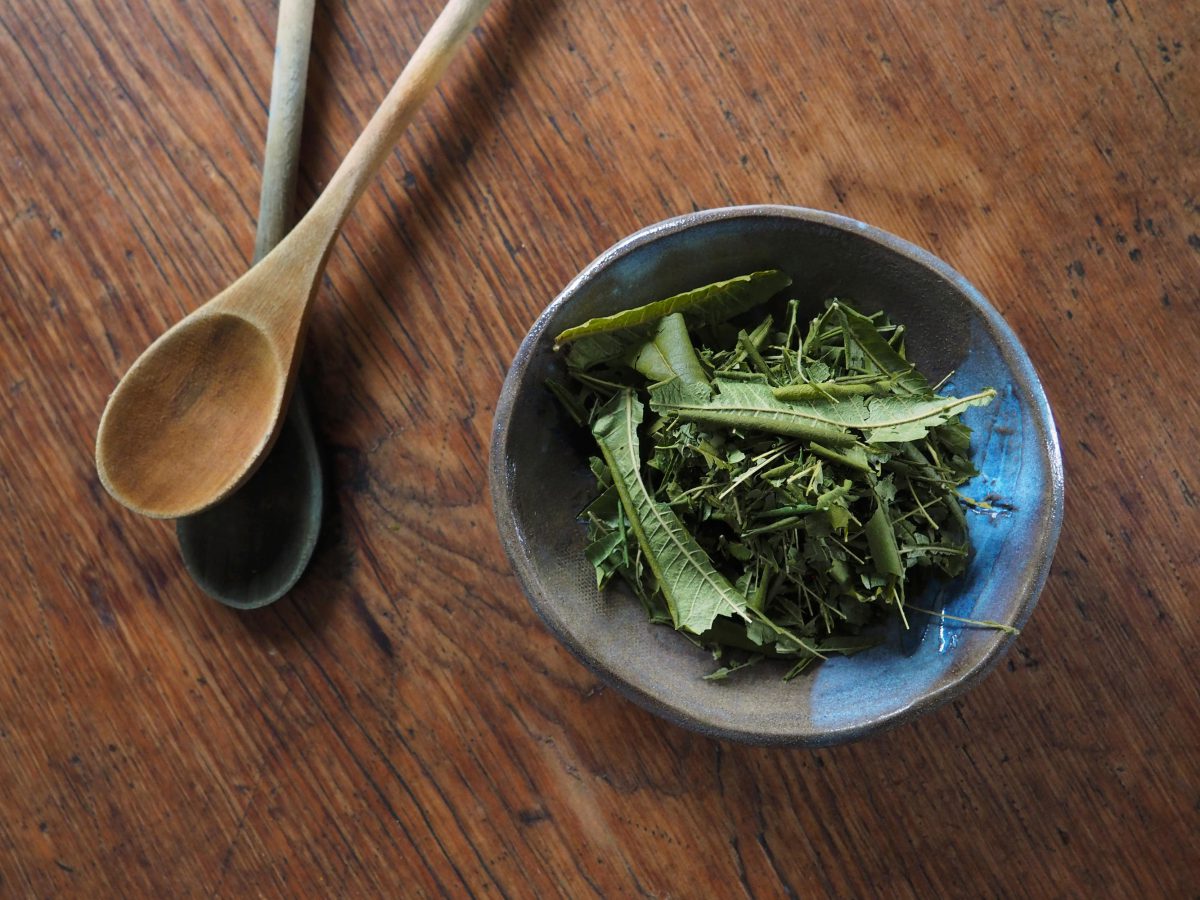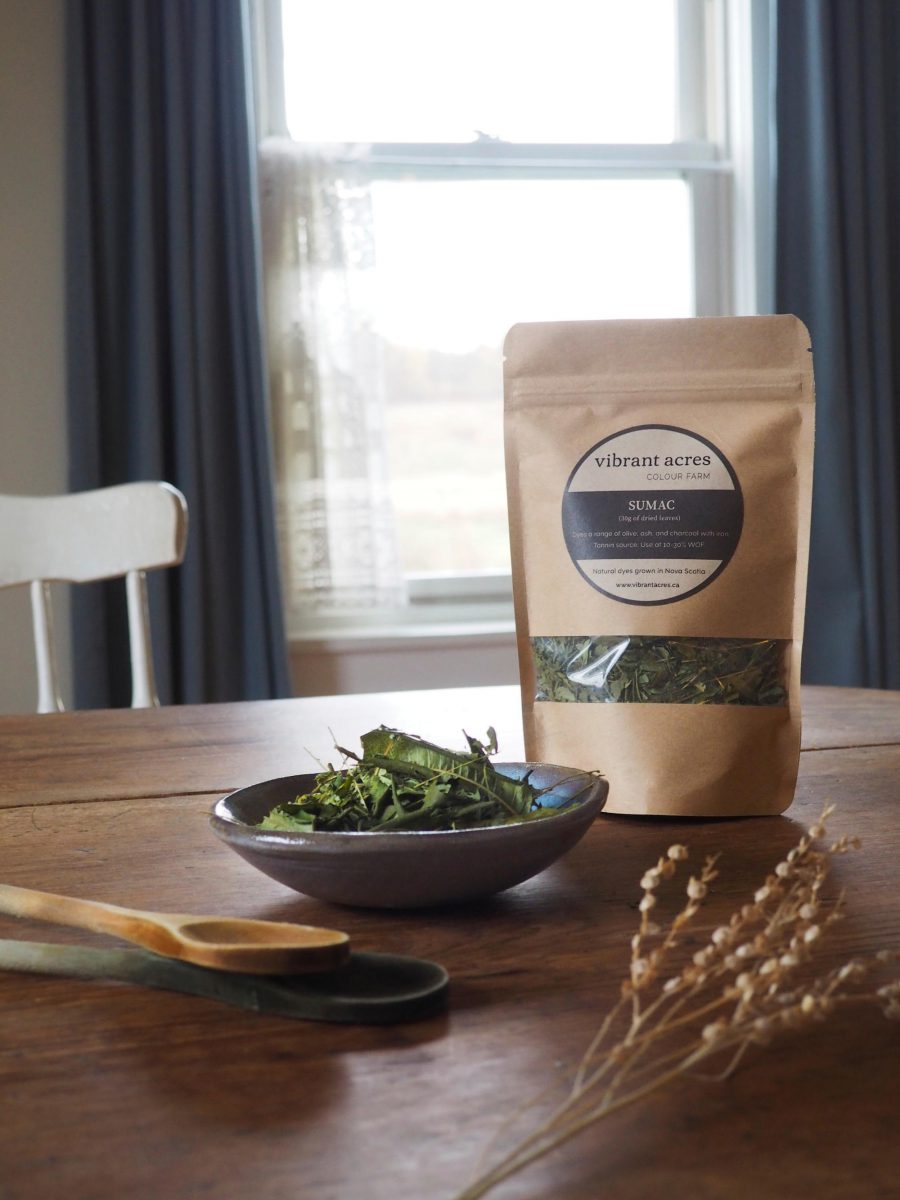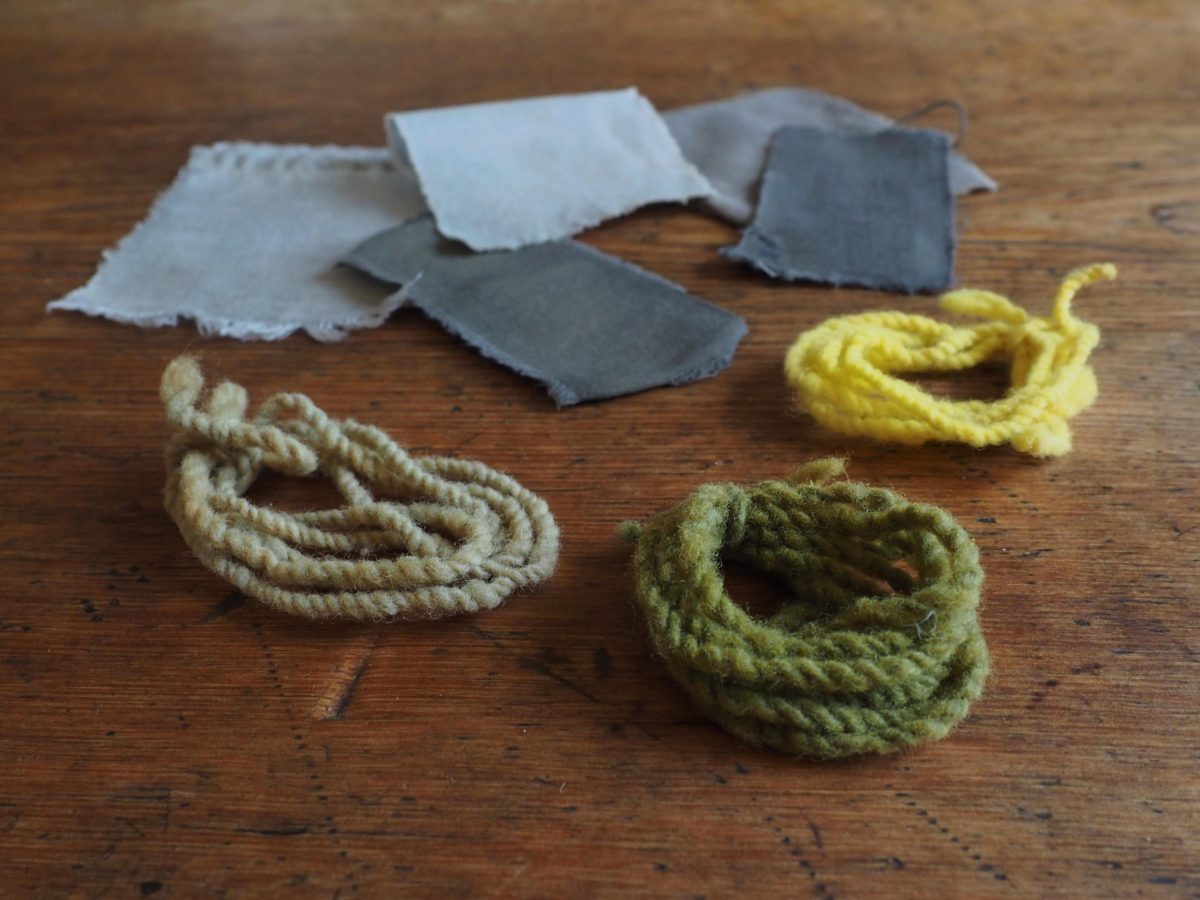Rhus typhina
The striking almost tropical leaves and fruits of the Staghorn Sumac adorn roadsides and woodland edges in abundance here in Nova Scotia. This sumac is native to the area and turns a stunning fiery red in the fall. It loves to grow in clumps and will readily spread over an area. As a result, we have been foraging our sumac leaves from friends’ farms who find them rather a nuisance! We’d like to start our own patch on the farm, but are choosing the location carefully so as to not have any regrets. Sumac is a wonderful source of tannin and can be used at a lighter WOF to assist other dyes in bonding to your fibre. It can also be used with iron to produce a rich neutral grey dye – especially on cellulose/plant fibres.

Key Dye Colours: Tan, cool yellow, olive, ash, and charcoal; tannin source
Dye Process: Colour is extracted by bringing to a gentle simmer until the water turns a tan colour.
Weight of Fibre (WOF): Use at 30% for a medium dye shade. For a darker colour, use more; for a lighter colour, use less. A small bag will dye ~100g of fibre and a large bag will dye ~330g of fibre. A typical wool skein is 100g.
For use as a tannin, use at 5-20%. A small bag can be used for ~150 to 600g to of fibre and a large bag for ~500 to 2kg of fibre.
Key Modifiers: Iron on cellulose/plant fibres will produce an ash to a charcoal grey depending on the amount of dye used. Iron on protein/animal fibres will produce a rich tan to an earthy olive green depending on the amount of dye used.
Washfastness: Very Good.
Lightfastness: Very Good.
Overall Colourfastness: Very Good.
Natural colour grown with care
This natural plant dye was grown with care on our small farm in Nova Scotia’s Annapolis Valley. All of our dye plant material is dried on site immediately after harvest to preserve quality and maximum vibrancy of colour.
Natural dyes can only be used on natural fibres (cotton, linen, wool, bamboo, hemp, silk). For best results, natural fibres should be pre-prepared using a mordant or tannin before dyeing. Natural dyes and mordants are available in our online store.
Natural dyes create unique living colours that will evolve and wear over time as they are washed, worn, and loved creating colours and garments that are alive, telling the story of their use. While they are not as consistently repeatable or as durable as many synthetic dyes, they are far more environmentally friendly and, in our opinion, absolutely unmatched in magic and beauty. If you are new to natural dyes, we have a free guide to getting started with natural dyes.
We foraged our 2020 sumac leaves from a nearby farm.


